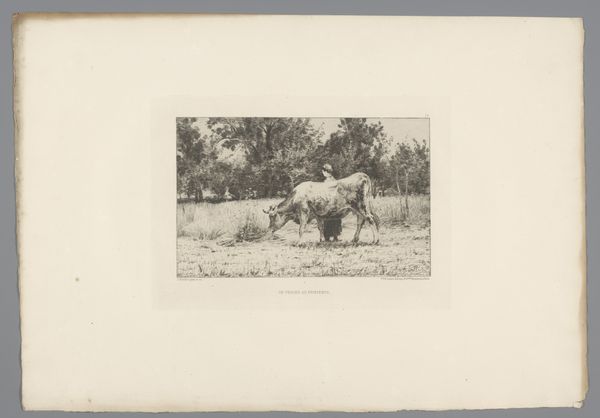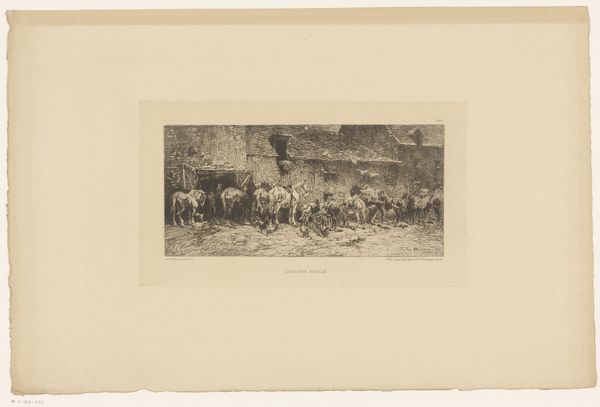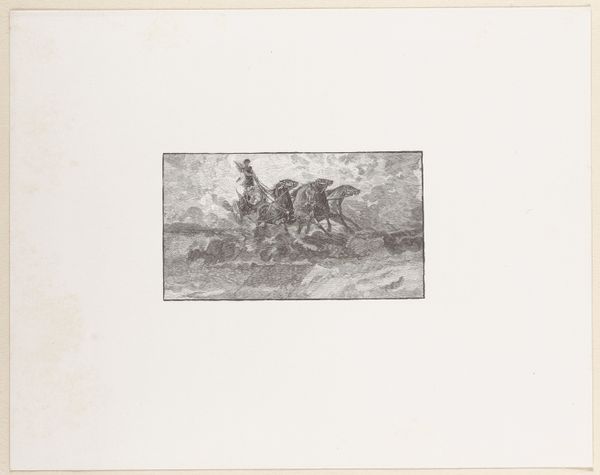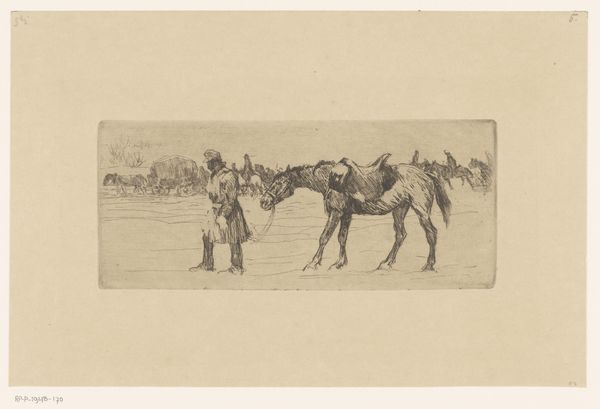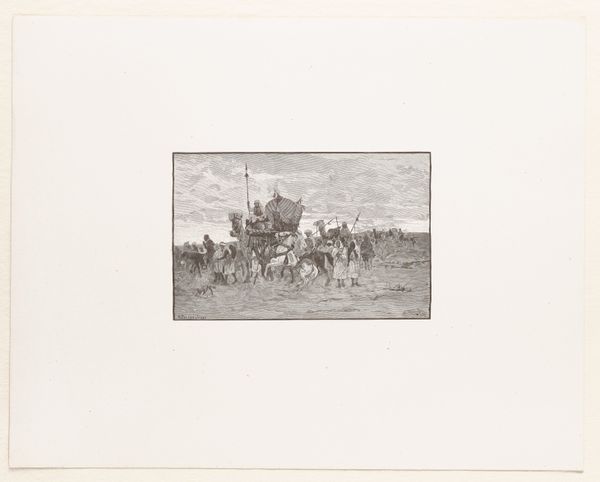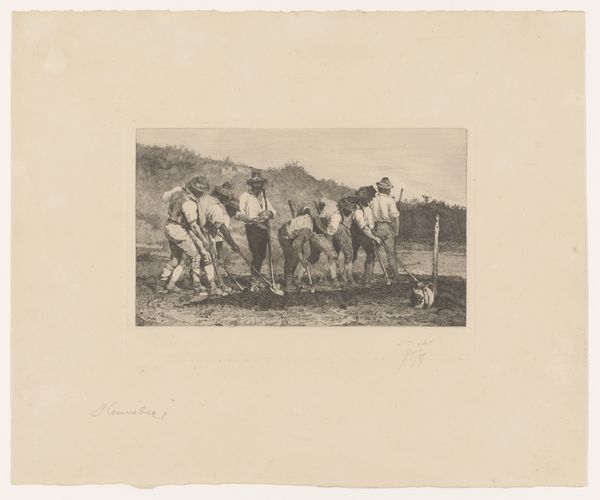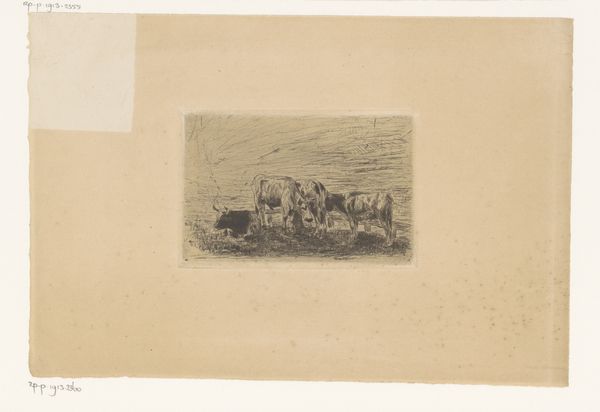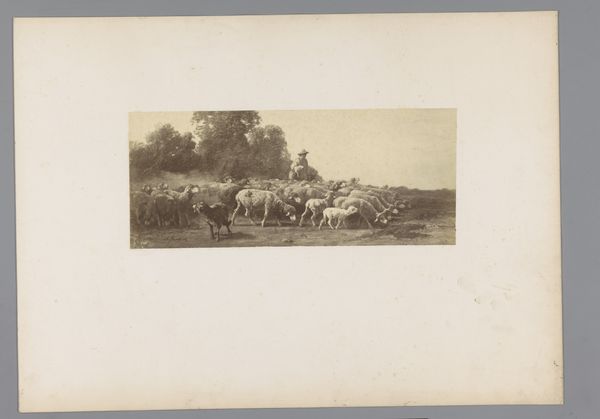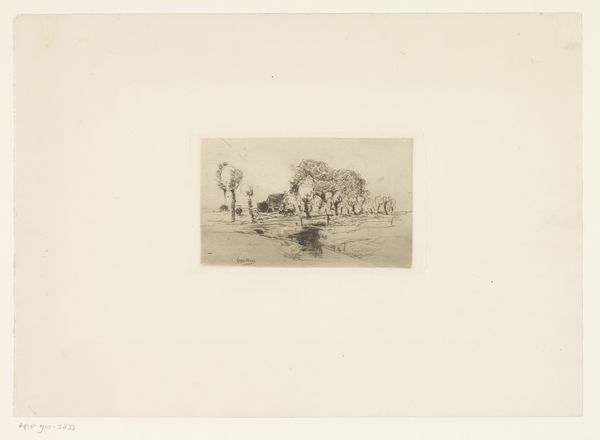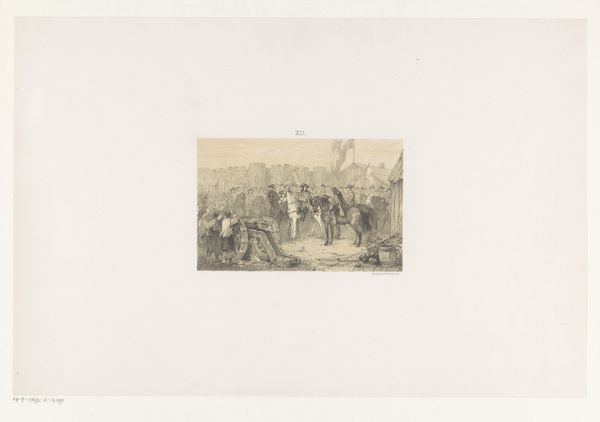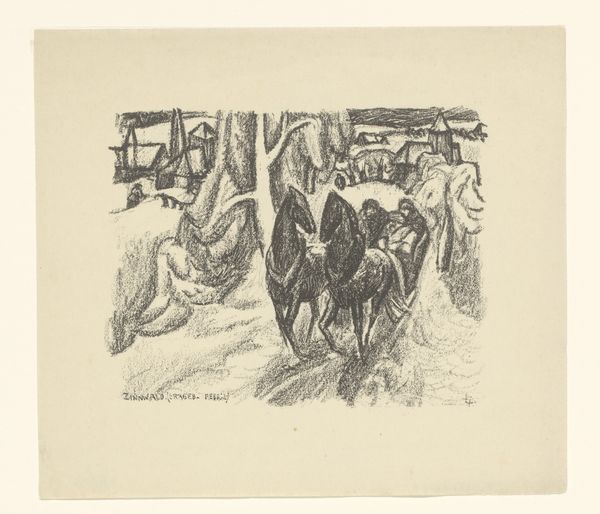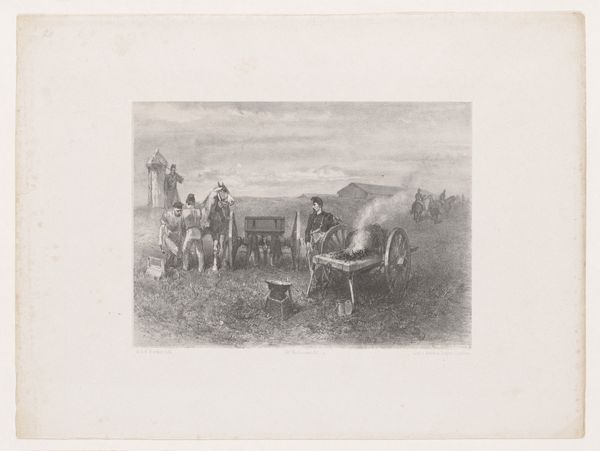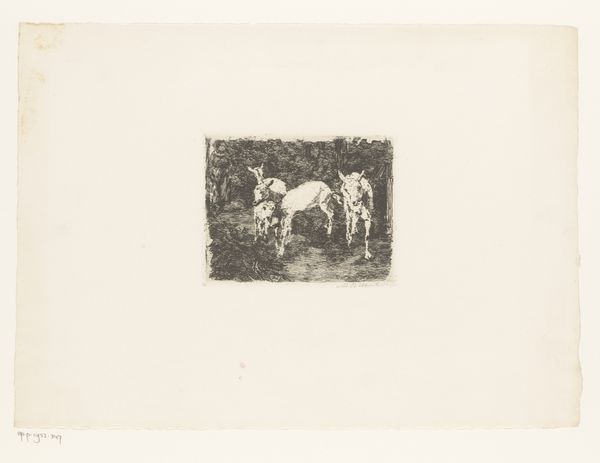
drawing, print
#
drawing
#
dutch-golden-age
# print
#
landscape
#
watercolor
#
realism
Dimensions: height 129 mm, width 179 mm
Copyright: Rijks Museum: Open Domain
Editor: This print from 1924 by Willem de Zwart, titled 'Two Cows and Two Farmers by a Tree', feels like a snapshot of a bygone era. The composition is simple, yet there's something so compelling about the everyday scene. I’m curious, how do you interpret this work in the context of its time? Curator: This print, made during a period of reconstruction and re-evaluation after World War One, portrays an idealized vision of rural life that resonated deeply with Dutch society. We often see this during times of upheaval – a longing for a simpler past. Consider the composition; the figures are integrated with the landscape rather than dominating it, evoking a sense of harmony between people and nature. Editor: So, it's a bit like a comforting postcard from the countryside, especially given the turbulence happening in the world? Curator: Exactly! De Zwart isn’t just showing us cows and farmers; he's presenting a carefully constructed image of Dutch identity, rooted in agriculture and tradition. And think about the act of creating a print. Prints allow for wider distribution of imagery. This makes it accessible to a large number of the population. It would reinforce certain socio-political agendas. Who had control over the visual representation of the population is also important to think about. Editor: That’s fascinating. So, the very act of making it a print transforms it from a simple observation into a piece of cultural propaganda, of sorts? Curator: Propaganda might be too strong a word, but yes, it’s undoubtedly participating in a discourse about national values and the importance of preserving a certain way of life. Now, how do you think this kind of imagery affected people at the time? Did it ease anxieties, or perhaps gloss over more complex realities? Editor: I think it’s probably a bit of both. On the one hand, it would be reassuring. On the other, it could have masked the difficulties farmers faced and created unrealistic expectations. I definitely have more to consider now about the politics embedded in seemingly straightforward images. Curator: And that's the key! Recognizing the public role and influence of art is essential to understanding its power.
Comments
No comments
Be the first to comment and join the conversation on the ultimate creative platform.
